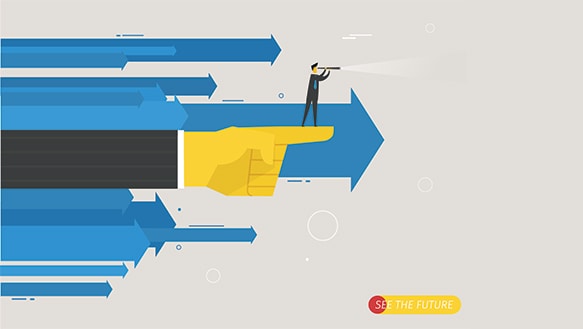
Though you may not be able to become an astronaut, and go to space just yet if you have diabetes in the United States, you can get fairly close to it. Currently, there are no astronauts with diabetes in space in the US or Russian space programs. If you were wondering how astronauts with diabetes could manage their condition in space, that’s a good question.
There is one man, Josu Feijoo, an astronaut from Spain, who will be going to space with Type 1 Diabetes in 14 months. He is going with a private company VirginGalactic, to research the safety of having astronauts with diabetes in space.
Josu has Type 1 Diabetes, and we will speak with him about his space adventures, and what the researchers are expecting to learn from this research. It’s an exciting time where in 14 months', a person with diabetes will be doing space exploration. Private companies are opening the door for more people with diabetes to have this experience.
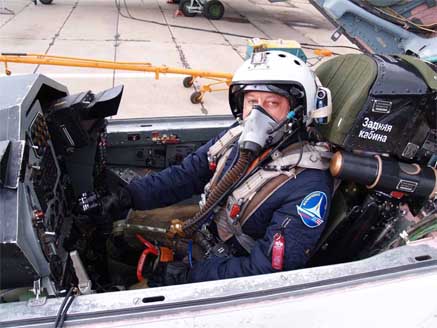
There are people with diabetes who work in positions at NASA, like “Nerdy April,” who landed her dream job as an ADCO (Attitude Determination and Control Officer) for the International Space Station (ISS). To find out how she is still working to break down the barriers to becoming an astronaut, read on. She is an inspiration!
Due to laws against discrimination, there should be no more blanket bans on diabetes for any occupations anymore. Therefore, each astronaut application must be evaluated individually. All things are considered, including blood sugar control, episodes of low blood sugar, and complications of diabetes that may already be present.
NASA generally requires that astronauts be in overall great physical shape, so it’s difficult to pass the FAA Medical Examination. Just the mention of Type 1 Diabetes is an exclusionary issue for outer space. So far, no one with diabetes has been able to make it through the medical examination with clearance for space travel. However, people with diabetes do work at NASA with astronauts, every day. April does. Let’s hear what she had to say…
Contents
- April Blackwell’s story
- Interview with April Blackwell – NASA Space Station “Pilot”
- Josu Feijoo’s story
- Interview with Josu Feijoo
- What happens in space?
- What happens to the human body in space?
- Diabetes and space
- Why can you be an astronaut, but not go into space with diabetes?
- What about the future?
- Over to you
April Blackwell’s story
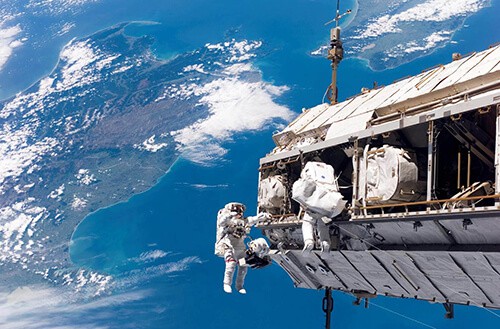
April, who was diagnosed with Type 1 Diabetes at the age of 11, took the time out from her busy evening shift with Mission Control at NASA, to talk with me about how she became ADCO certified with NASA to control the International Space Station (ISS) solo.
Growing up, April always wanted to become an astronaut. When she was diagnosed with Type 1 Diabetes, she was told that it was not possible. Still, April’s parents encouraged her, and took her to aerospace museums as a child, and she never lost sight of her dream. Later, she obtained a degree in Aerospace Engineering, which helped her get her first job with the Army.
Before she got to NASA, April utilized her operation skills as a Flight Test Engineer for the US Army. As a civilian working for the Army, she spent time on helicopters as opposed to her preference (rockets), but she grew to love her job. It later gave her experiences and many opportunities, including landing a job with NASA in 2013. April made it through NASA’s intense training process, and earned her ADCO (Attitude Determination and Control Officer) Operation certificate in May of 2015. April is a committed advocate for the importance of science in America’s schools, an advocate for others with Type 1 Diabetes, and an inspiration for those wishing to overcome barriers with diabetes.
April also enjoys blogging about diabetes, space, and life in general, and helping others realize their dreams with diabetes. You can read her blog and more information about her at: Nerdyapril.com.
I recommend reading the following articles as well:
Interview with April Blackwell – NASA Space Station “Pilot”
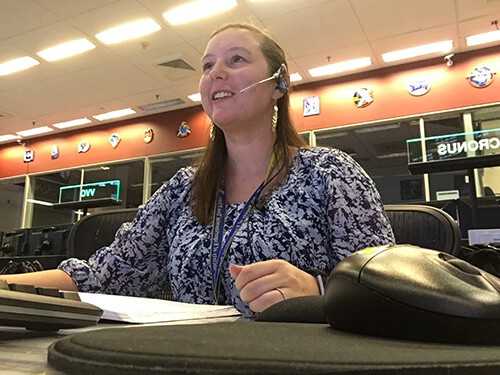
My interview with April Blackwell, also affectionately known as “Nerdy April,” kicked off with a reflection on her childhood dream, to become an astronaut.
“As a child, I dreamed of becoming an Astronaut. Then at age 11, when I was diagnosed with Type 1 Diabetes, I thought I could be the first diabetic in space. I eventually went to college for a degree in Aerospace Engineering, which led me to where I am now, at NASA in mission control. Even though I’m not an astronaut, I get to see astronauts, and work with Astronauts every day, even if I’m not one myself,” said April.
April described a typical day in the life of an ADCO for the ISS. “I’m a control officer for the ISS at NASA, and in layman’s terms, we call ourselves the International Space Station pilots. We get to fly the space station from the ground. It’s a fun job. I get to work with other mission controllers here in Houston, but I also get to work internationally with Russia, Japan, and Germany.”
“For instance, tonight I’m actually working on console. I go in about 3:30 pm, and take over the console for a 9-hour shift. During that time, I’m monitoring telemetry coming down from the space station, and sending commands to make sure that everything is running smoothly. We send commands that make changes aboard the ISS.”
“Physically, it’s all done through computers. The reason that we are there is that anything can happen at any time, so we must be prepared for any emergency situation. We go through about 2 years of training, so it’s like another master’s degree.”
“We do many simulations, to make sure that we can handle ourselves under pressure, in case there are any issues aboard the ISS that we need to react to. There are five consoles manned 24/7. We are there on Christmas day, and even in the middle of the night. People in other countries work around the clock as well, and there are five officers in Houston that are there all the time.”
When asked about her biggest challenges as a person with Type 1 Diabetes at NASA, April said…
“I think I present a unique challenge for Type 1 Diabetes to be in my job. Not only am I watching literally hundreds of parameters coming down from the space station, but I also have an insulin pump with a Continuous Glucose Monitor. I must monitor my telemetry as well. I need to take care of myself first. If I’m not in the right blood sugar range, or watching my diabetes carefully, I could potentially jeopardize the crew that’s on the ISS, and that’s not something I want to have on my conscience.”
She continues, “so, it’s a little more pressure just because my body does not naturally regulate its insulin levels. I’m thankful for the technology I do have to make that easier.”
When asked if she knows any people with diabetes of any kind who have made it to space, April said, “Certainly NASA has never had an astronaut with Diabetes. I did my master’s project on the types of testing that I think we would need to do in order to fly people with Type 1 Diabetes safely, and build up the medical knowledge of how Type 1’s react in a space environment.”
“I thought in the back of my mind that maybe one day I can be a subject in those tests, to one day be an astronaut. But the whole approach I layed out there was of incremental steps. Starting with the private companies that are coming online that are doing 15-minute flights would be an excellent way to get people with diabetes up. We need to see how pumps react, and how blood glucose reacts, and if there’s any special considerations before we try a longer duration mission.”
April finished her master’s thesis about four years ago in Aeronautical science. Her partner is also an aerospace engineer.
“We have a lot of nerdy conversations at our house, and we met at space camp, so that was fun,” said April. “I have a daughter, and I had a very successful pregnancy with Type 1 Diabetes. It was a very good outcome.”
For the future for people with diabetes in astronaut careers in space, April said, “I see that there are two different paths that could be taken. One could be that we lobby NASA, and bring this up as an important issue to test people with not so perfect health records in space, including people with Type 1 Diabetes, to understand the mechanics of how that would work in space.”
“The other path would be, of course, a cure for diabetes. When I was diagnosed, almost 20 years ago, people said ‘In 5-10 years we’ll have a cure,’. You know it’s been 20 now, so I don’t know exactly how much I believe those predictions. But I do believe there is something out there, and if we can find a cure, that would “grease the skids” for us with Type 1 Diabetes to be astronauts some day.”
When asked about her career direction, and plans for the future, April said, “I really love working at NASA. I love the culture there, and the challenges that we get to face every day, and come up with solutions for. I like being in operations where I get to make decisions, basically without a manager. They trust me to make decisions, even if I’m sitting alone in the middle of the night at the console.”
“I think there is a lot more opportunity coming up. We are going to have a mission to deep space or Mars in the next decade or so, and we are going to have some more private companies coming up taking people to space, and possibly a space station or other outpost that gets built. So, I really think those challenges are where my passion lies. That’s kind of where I see myself headed.”
“For my previous job, I flew on military helicopters, and what I noticed on my research was the old thinking and the old documentation, especially for the aviation administration, to get your pilot’s license, it was really genericized for diabetes across the board. I feel like they just took the worst-case scenario of a diabetic, and said, if this the type of person we are looking at, we don’t want them to have a pilot’s license.”
“I think that’s sort of the beauty of technology. Jobs that used to refuse people with diabetes are opening up, because they are taking a different approach, and looking at us more as individuals, instead of this stereotypical community. I think it’s important to keep that momentum going by looking at us as individuals. I think if NASA had the time, money, and budget to really dig in, and really look at Type 1 Diabetes, and how we control it, they would find many of us stack up just the same as our non-diabetic counterparts. So, I believe that could be a movement that we kind of continue.”
As to the barriers and the problems that a person with diabetes might experience in space, April said, “I’m not a doctor, so I can’t speak to all the medical aspects of it. One part of it is the risk. NASA, as much risk as we do take, I would say we are risk adverse. We try to minimize risks we do take. That’s why every astronaut is a perfect healthy specimen, and we try to keep those variables down.”
“That would be something that someone must look at, and as far as the physics - the disease, as far as I know - we are able to administer injections in space. I’m fairly confident that would work. How the insulin would be distributed through the body, and how the space environment, (radiation, stress levels, or zero gravity), would impact blood sugars, I’m not sure.
Getting a baseline with a shorter duration would be a start, and setting up new procedures. Because now your astronaut peers are going to have to know how to take care of you if something happens. Training for diabetes in space would be another aspect, since they probably don’t get training on it now. So, there’s a lot of little factors that feed into having a diabetic astronaut.”
Following her first shift solo as an ADCO for NASA in Mission Control, April decided to write a poem for NASA. She wrote…
“This afternoon/evening is my first "solo" shift as an Attitude Determination and Control Officer in Mission Control. Oh my gosh I'm so excited/nervous/anxious/NASA(!!!!!)...so excited I wrote you a poem. It's a poem by an engineer, so don't get too excited 😉 But I assure you my ISS flying skills are much better than my poem-writing skills. Also, I may be flying ISS over a city near you, check it out here.”1
Make sure you sign up with NASA above, to see when the ISS and April, are flying over your city. I did, and it just so happens that they will be flying over me at 6:30 am tomorrow morning! I will be looking out for you, April!!
The following is an excerpt from the poem April wrote:
These compys perform tons of calculations,
Filtering, vibrations, and some summations.
They run loops, check systems, and send commands,
The details are difficult to understand.
Then we gather the brain cells we can muster,
To learn about the Russian Segment's thrusters.
There are a bunch, and their logic is complex,
But useful to avoid space debris objects.
Working on console is more than technical,
It requires good comm, and being flexible.
Discipline, teamwork, toughness, confidence,
Responsibility, vigilance, and competence.
So that's what I do in Mission Control,
Keep 'er straight and level (avoid barrel rolls).
It's quite the dream job - its mine anyway,
I just want to jump up and shout, "Hurray!!"
Thanks to April for sharing her story with us. One day, we hope to see the headlines read “First Person with Diabetes in Space, April Blackwell.” Congratulations April, on getting your foot in the door at NASA, and continuing to break down the barriers people with diabetes face today.
Josu Feijoo’s story
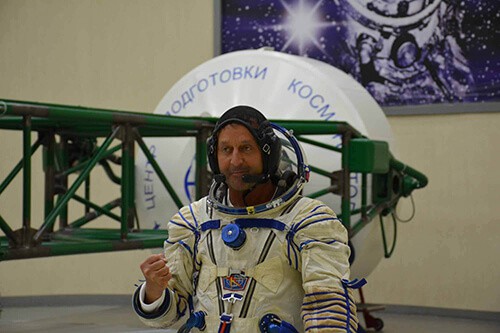
A Spanish astronaut, Josu Fiejoo wants to be the first person with diabetes in space. Looks like April and he will have to get into a competition for this. He is already training for going into space with a private company. Not only is he an astronaut, but he is also a mountain climber, and avid sports enthusiast. In addition to climbing Mt. Everest, he has climbed Mt Elbrus, Mt. McKinley, and Vinson Massif in Antartica, as well as Mt. Kilimanjaro.
I would have to say that he has done his time in isolation, and he should be allowed to try his skills in space! What are some of the things that Fiejoo could help scientists to understand when he goes up into space? As it turns out, he may be testing new measuring devices for blood sugar, with tele-medicine systems that can transmit results to earth in 15 minutes.
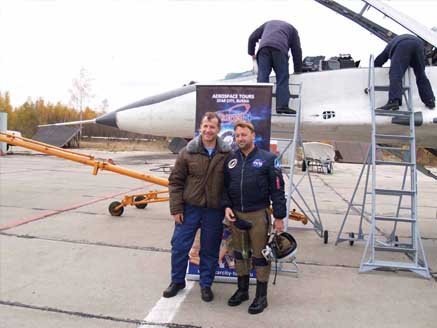
In space, he will take a new insulin that has passed clinical trials with animals and with people, that can be injected three times per week instead of every day. They will test the effects of the medication, which lasts between 48 and 55 hours, and see how it works in outer space. Feijoo will also have his blood drawn in space, to see if protein levels remain the same with zero gravity.
Feijoo says that he is not worried, but he did write out a last will and testament in case. He will go up with his blood sugar high, and then inject insulin in space. He thinks that if the new insulin doesn’t work well, that he will still have time to get back to earth without incident. Wow, what an interesting guy!
Interview with Josu Feijoo
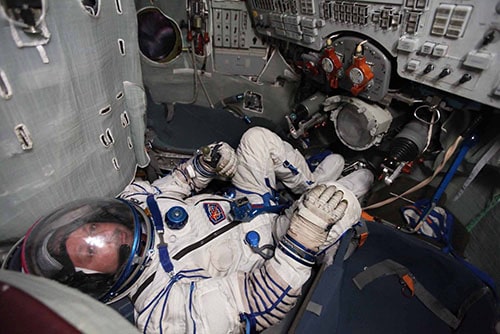
In speaking with Josu Feijoo, I find a theme among those who wish to be astronauts…
“Since I had reason, I’ve always wanted to be an astronaut. From the age of six, it has been my dream. I also had a dream to climb Mt. Everest. I began to practice climbing at the age of 12. On May 18, 2006, I reached the summit of Everest, being the first person with diabetes in the world to climb the highest mountain.”
“Parallel to this, I continued my IDFEA to go to space, but the American and Russian space agencies do not admit diabetics. I do not know why. Then Virgin Galactic appeared, and gave me the opportunity to be an astronaut. I started training in the space center, NASTAR, and I did very well. So much, that thanks to their contacts, I can access privately the seminars and trainings of the Russians and the Russian space centers. In fact, for five years, I trained every year in the Russian space center Yuri Gagarin (City of the Stars).”
“What is clear is that when you enter to train in the centrifuge, to pilot combat airplanes to simulate orbital turns, or when I put on the astronaut suit to go down to the pool and train or solve problems in the real size replica of ISS international space station, diabetes is not an excuse. You are prepared, and you are the best, or farewell! And I do it very well.”
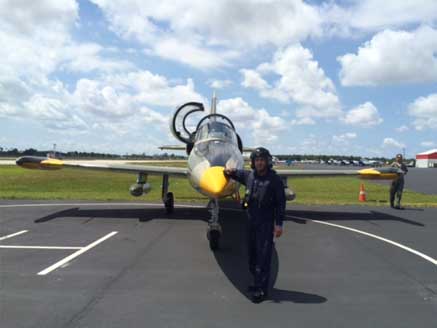
“My trip to space has several constraints,” said Josu. “The first is for me, because it is my dream. The second is to break a spear in favor of the diabetic collective, to show that we have the same opportunities. The third is to test a drug in my body which eliminates my inflammatory cytokines, and see if by a process of mutation my alpha cells are converted into beta cells and thus generate insulin. In laboratory rats, the researcher Pedro Luis Herrera, from the University of Geneva (Switzerland), has succeeded,” said Feijoo.
“In 2009 we went to the Mohave desert to see the presentation of the spacecraft of Virgin Galactic, ENTREPRISE. Once presented, this began the test flights to ensure the safety of future astronauts, as did NASA in its day and the Russian ROSCOMOS. Virgin Galactic is currently testing its second ship UNITY, and if there are no technical problems, I will go to outer space in about 14 months.
It is one thing to want to go to space, and it is another thing to go. Going to the ISS costs exactly forty-four million dollars if you want to go with the Russian space agency, and the only one that can at the moment go up to the ISS. And I know it very well. I go to the Russian space center to train every year, and I have been told the prices. NASA doesn’t send tourists to the ISS. I’m trying to find a sponsor to pay me the forty-four million after my trip to space with VirginGalactic. But it’s complicated. It’s a lot of money.”
Referring to the article from the year 2009, I should say it is obsolete. Obviously, I did not go to space in 2009. When I go to space in the next few months, it will depend on the control commands of the VirginGalactic mission which I will test on. I am definitely a normal diabetic, only with big dreams and challenges. I use insulin pens and no pump.

I did pay for my trip to space with VirginGalactic eight years ago, and training at the Russian space center. I have spent more than five hundred thousand dollars on centrifuges, piloting combat aircraft, and Hidrolab. Now I’m looking for the forty-four million to go to the ISS in three years. Flying into space with VirginGalactic costs between trainings, plane tickets, etc, etc, about 300,000€.
I live in Vitoria, Basque Country, Spain. I have a little house in a small village on the Basque coast, Loredo, (Santander), and at the moment, karate and surf are my favorite sports. I work as an electrical engineer in my own company.
On Easter week next year 2018 (March-April), I will take my fourth group of diabetics to Mt. Everest, a trekking possible thanks to my collaborators. To date, we have only uploaded three diabetics around the world: me first; then an American, and finally a Canadian, and all guys. I'm married, and I have a 13-year-old daughter, who on weekdays goes to karate with me at the gym. On weekends, she goes surfing with me.”
Thanks to Fiejoo for sharing his story with us here. We are looking forward to see what is in store for him and perhaps, catch up with him after his trip to space, to see what the researchers found, and how it went.
What happens in space?
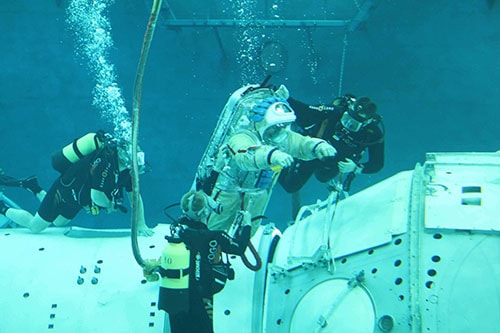
Very few people have experienced space travel. For most, they have seen a rocket launch on TV, or if they are lucky, in person. One day, we may be able to experience space travel, as companies plan to host private citizens in rockets to space for short rides in the very near future. This will cost a large sum of money, and will be reserved only for the very rich.
Even though we have never been to outer space, it’s helpful for us to understand how our bodies might be affected by zero gravity, stress levels, radiation, and other factors when trying to understand why people with diabetes have not been allowed to be Astronauts. For starters, a rocket can weigh up to five million pounds. 7.5 million pounds of force thrust the space ship into the air.
It's not a smooth ride, but rather bumpy and noisy. Force that is three times your weight pushes you back, as the space ship ascends. Within just two short minutes, you will be 100,000 feet above the planet. Once you are in space, there is no other way to describe the view, except that it is spectacular, according to eye-witness accounts.
Within a little over eight minutes, you are in outer space, and approaching orbit. At this point, the space ship is going 18,000 mph. At that speed, you can go all the way around the earth in under two hours. The sun sets, and the sun rises in space, and at lightning speed, you will see it happen in under 45 minutes.
What happens to the human body in space?
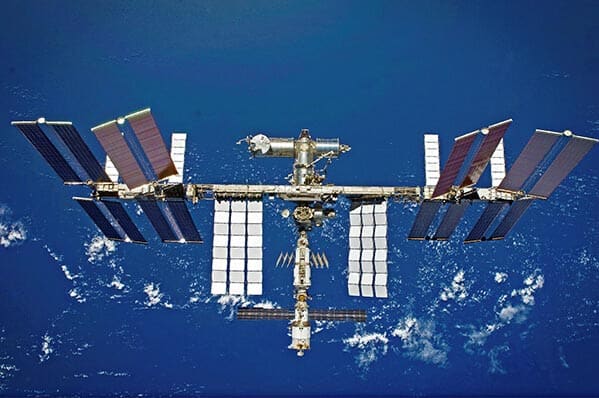
The human body must adapt to space travel. The lack of gravity plays a role in an astronaut’s health. Dimensions and proportions are not the same in space as they are here on earth. For the astronaut, the shift in fluid in the body related to zero gravity causes fluid build up in strange places. The astronaut’s face can get very swollen. Since gravity is not there, part of the body’s fluid volume that usually remains in the lower extremities is displaced to other body parts.
The heart must circulate blood throughout the body, which is also dependent on gravity. Fluid is then free to move through the body to the face, head, neck, and brain. Astronauts with this fluid shift problem tend to feel as if they have a cold coming on, or a sinus infection.
The human body will also increase in height in space. Some astronauts will grow an inch or two. Scientists believe that this is due to vertebral disc swelling from fluid uptake. When gravity is lost, the body doesn’t compress down on the spine anymore, thus the gain in height.
Scientists have learned some things about how the human body reacts and adapts to space through studies, although many more need to be done. By taking experiments into space, they can look at the cardiovascular, musculoskeletal, and blood factors that occur in space.
Bone mass, for example, is one thing that can be lost in space. In some studies, astronauts lost one percent of their bone mass for every month in space. Scientists are unsure when bone loss would stop once back on earth with prolonged space travel. The longest an astronaut has stayed in space so far has been slightly over a year’s time.
Other changes that occur in space include immune system changes, white blood cells, and our ability to fight diseases. A full 15% of muscle can be lost in space. Weight loss of five to ten pounds occurs when astronauts go on space missions, which is still due to fluid shifts. Another problem that can occur is that the astronaut can become anemic.
This happens when the extra fluid is gotten rid of through urination, and red blood cell production in bone marrow slows, causing some astronauts to develop anemia. The changes that occur in the body in space are not so much of a problem if you are in space. It’s when you return home that they can create a problem.
Diabetes and space
There has been little research related to diabetes and its management in space. This is mainly since the screening process is so rigorous, that a person with diabetes will not be cleared for space travel. With more studies related to the effects of space on blood sugar changes in space, we should be able to get some more information to help people with diabetes with the appropriate tools and knowledge get to space. Now that there is an International Space Station, researchers are better positioned to study the affects of space on the human body.
Most of the things we do know about the effects of space travel on the human body, we know from the Apollo missions. Results from another mission did give some insight into the negative effects that space can have on humans related to diabetes.
Testing done on Chris Hadfield on the ISS
Commander Chris Hadfield, a Canadian astronaut who doesn’t have diabetes, spent time on the ISS, and tests performed on him showed that the effects on an astronaut’s health were worse than previously presumed. You may remember Commander Hadley as the astronaut who performed David Bowie’s “Space Oddity.” Over 22 million people watched, as he filmed his departure from his final mission aboard ISS.
The University of Waterloo conducted the study, and they outlined many serious health conditions that can arise during or following space travel. The longer the mission, the worse the health issues are for the astronauts. The most serious of the conditions reported was one in which insulin levels were raised, similar to diabetes.
Commander Hadfield was on the ISS for five months. He and four crew members experienced elevated insulin and “other diabetes-related blood biomarkers” were found. None of the astronauts, including Commander Hadfield, showed signs of being diabetic. It was hypothesized that the fact that an astronaut must remain sedentary in space, was the cause of the rise in insulin levels.
Other dangers to human health in space include:
- “space blindness” caused by swelling of the optic nerve
- farsightedness
- Reduced mental awareness and recall
What happens to our bodies in space closely mimics what happens as we age. As astronauts orbit our globe, they may be able to find insights into how the body ages, or find cures for chronic diseases, such as diabetes.
Why can you be an astronaut, but not go into space with diabetes?
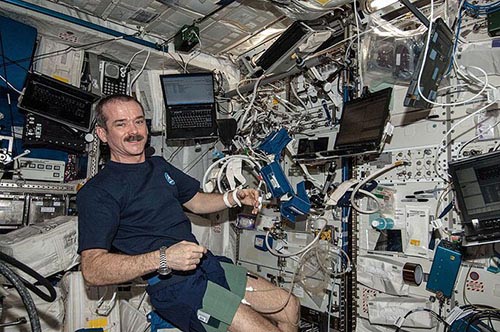
- To be an astronaut, you must first pass the FAA flight physical
- Diabetes management in space is difficult at best, and studies have shown that time in space worsens diabetes
- In space, you may not be able to check blood sugars, and care for diabetes in certain situations (launch, spacewalks, long missions)
- There is no refrigeration aboard spacecraft, therefore insulin storage becomes an issue with long missions
- NASA chooses candidates in top physical shape due to the rigors of space travel
- People with diabetes are prone to emergency events that could be unmanageable in space
- Research has shown that prolonged space travel causes a condition like Type 2 Diabetes with elevated insulin levels
- Astronauts have a sedentary career, as you are mostly sitting still in space3,4,5
What about the future?
We have learned that because you have diabetes, it doesn’t necessarily mean that you can’t work with astronauts. You may be able to perform another job besides going into space. It’s possible that you could be an engineer, and design parts for space crafts, you could develop metals that withstand extreme environments in space, or you could work in mission control like April.
You will need to study hard for this highly technical career, and have your diabetes well managed. Who knows when they might find a cure, or NASA might decide to let astronauts with diabetes go into space. It couldn’t hurt to get your foot in the door in case! April Blackwell will certainly be front and center if they ever decide to do it. Meanwhile, put your head in the game, and reach for the moon and stars!! You just may get there. Stranger things have happened.
Further reading:
How the American Diabetes Association can help with advocacy
Over time, the acceptance of people with diabetes in the workplace has improved. Even for careers like an astronaut, the science has improved. With new technology, and better control over their diabetes, people with diabetes are capable of working in just about any career these days. Though NASA doesn’t always turn people away with diabetes, as we saw with April Blackwell, they still have a blanket ban to enter space.
Articles like this will raise awareness related to the effects of space on diabetes, and hopefully one day, a cure will be found that will allow for space travel by those with diabetes. Issues need to be worked out, and more research needs to be done, but advocacy is still available through the ADA for those who wish to pursue it.
You may contact the ADA if you have any issues related to workplace fairness and diabetes.6
Over to you
Have you always dreamed of being an astronaut? What an inspiration April and Feijoo are to others with diabetes who are interested in space travel! Tell us what your thoughts are about our article on people with diabetes in space. For myself, reading about space, and talking to NASA “pilots” and astronauts gave me dreams of spinning through space last night. Sweet dreams yourself, and don’t give up! Shoot for the starts!!
TheDiabetesCouncil Article | Reviewed by Dr. Jerry Ramos MD on June 01, 2020
References:
- http://www.nerdyapril.com/2012/01/on-becoming-astronaut.html
- http://www.laht.com/article.asp?ArticleId=324205&CategoryId=13003
- https://www.ncbi.nlm.nih.gov/pmc/articles/PMC2771490/
- https://gizmodo.com/living-in-space-is-like-being-old-and-having-type-2-dia-1592801454
- https://beta.theglobeandmail.com/life/health-and-fitness/health/the-hazardous-effects-of-spac
- http://www.diabetesforecast.org/2013/jul/diabetes-and-your-career.html/
- https://www.smithsonianmag.com/smart-news/spending-too-much-time-space-basically-sets-you-type-2-diabetes-180951767/


